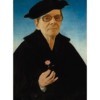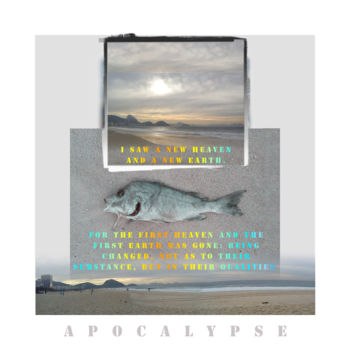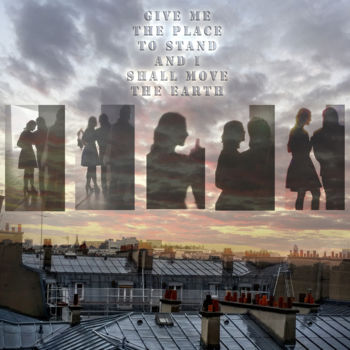
Lassen Sie uns wissen, wenn Sie mehr Fotos von diesem Kunstwerk sehen möchten!
- Rückseite der Arbeit / Seite der Arbeit
- Einzelheiten / Unterschrift / Oberfläche oder Textur des Kunstwerks
- Kunstwerk in Situation, Andere...
anunciação_22.jpg Druckgrafik von Matheus Gorovitz
Verkäufer Matheus Gorovitz
Dieses Bild steht zum Download mit einer Lizenz zur Verfügung
Verkäufer Matheus Gorovitz
-
Original-Kunstwerk
Druckgrafik,
- Masse Abmessungen sind auf Anfrage erhältlich
- Kategorien Druckgrafik unter 500 $
God exists even when there it isn’t
(Guimarães Rosa, Grande Sertão: Veredas)
In Ambrogio Lorenzetti’s Annunciation we observe the beginnings of the pictorial representation of space in Perspective.
The affinity between linear Perspective and the Annunciation is justified; both share the ability to reconcile the sacred and the profane, the universal and the singular, the concept and the phenomenon and nevertheless, the promise of reconciliation between soul and body preached by religion. The dichotomy is meaningful only when such terms interact. The artwork originates in this relationship.
Perspective is the finite (measurable) representation of infinity (incommensurable) and the Annunciation deals with the incarnation whose sense is given by S. Bernardino of Siena:
Incarnation is the moment in which eternity comes in time, immensity in measure, the creator in his creatures, the infigurable in time, the untellable in the tale, the ineffable in words, the uncircunscribable in place, the invisible in vision, the inaudible in sound.
In the episode of the Annunciation the consciousness of being as a person (private) and as collective being (public) is embodied through dialogue, namely the way in which in we find ourselves by finding approval and support in the relations of social interaction. Identity develops only when we learn to see ourselves in the interactive perspective of another – that is, by reflection. As Shakespeare puts it:
Cassius – Tell me, good Brutus, can you see your face?
Brutus – No, Cassius; for the eye sees not itself, but by reflection, by some other things
(Julius Caesar Act 1, scene 2)
As well as the linear geometric construction, Perspective is dependent on the relative position of the subject – on his point of view, (hence the polysemy: design, purpose), in the Annunciation Mary's will is sovereign and decisive:
"Let it be with me according to your word. Mary agrees with what the Angel says".
I quote the biblical account with an emphasis not on agreement, but on disagreement, in the disruption of the dialogue that is described in the Gospel of Luke in the following terms: "Then the angel departed from her."
From a plastic point of view, I subvert the harmonic composition, the subordination of the parts to a specific law – an order that comforts us; I have recourse to dissonance, the disruption of order. Given the dissonant composition we are faced with two truths that contradict each other, the impasse anguishes and motivates a positioning. In short, the primordial issue is whether God exists or not. I end by quoting Shakespeare: «But then are we in order when we are most out of order».
Matheus Gorovitz (1938), professeur titulaire retraité de la Faculté d’Architecture et Urbanisme de l’Université de Brasilia / FAU-UnB, où il a enseigné les disciplines d’Histoire de l’Art et Esthétique dans les cursus de deuxième et troisièmes cycles (depuis 1973). Diplômé par la Faculté d'Architecture et Urbanisme de l'Université de São Paulo / FAU-USP où il a obtenu son master et son doctorat. Il a été boursier postdoctoral à l'Université Paris I Sorbonne (2000).
Auteur des livres : Brasília, uma questão de escala, Os riscos do projeto et co-auteur, avec Marcílio Ferreira, de A invenção da superquadra.
Auteur des projets d'architecture de la Faculté des Etudes Sociales Appliquées, de la Station Essence et du Pavillon rattaché à la station, tous sur le campus de l'Université de Brasilia.
Expositions :
1998 – Matheus Gorovitz / Julien Gorovitz – Espaço Cultural do Banco Central do Brasil – Brasília ;
1998 – Artes gráficas – Mostra Panorama das artes visuais no Distrito Federal – Brasilia ;
2000 – Desenhos – Galeria Arktetonicos – Brasilia ;
2001 – Coletiva de pinturas na 3ª Bienal de Arquitetura de Brasília ;
2001 – Mostra de desenhos – Instituto de Arquitetos do Brasil / DF ;
2001 – Projeto Remix – Mostra de desenhos computadorizados – Espaço Cultural Renato Russo – Brasilia ;
2003 – Exposição de pinturas – Instituto de Arquitetos do Brasil.
-
Nationalität:
BRASILIEN

- Geburtsdatum : unbekanntes datum
- Künstlerische Domänen:
- Gruppen: Zeitgenössische Brasilianische Künstler







